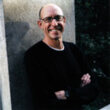Proof: The Science of Booze
(Libby/OverDrive eBook, Kindle)
Available Platforms
Description
More Details
Also in this Series
Published Reviews
Choice Review
The topic of this book, alcoholic beverages, is similar to that of Roger Barth's The Chemistry of Beer (CH, Oct'14, 52-0848), but Rogers (journalist, Wired) goes into more detail and also covers distilled beverages. After the introductory section, in chapter 1, "Yeast," he discusses the fungus that is the essential ingredient for fermentation, a natural but domesticated process that is the basis for creating all alcoholic beverages. Subsequent chapters include "Sugar," "Fermentation" (especially the history of domestication), "Distillation" (with an equally fabulous history), "Aging" (whiskeys and brandies), and "Smell and Taste" (incredibly complicated and poorly understood). Chapter 7, "Body and Brain," covers the effects of alcohol consumption, ranging from drinking small amounts through over drinking; these effects are also not well understood. Chapter 8, "Hangover," addresses both causes and remedies. In the conclusion, Rogers further describes the social aspects and psychology of drinking, especially in bars. He describes the science reasonably accurately throughout the book, except for some glaring errors in chemistry in chapter 7. Overall, an entertaining and informative work. Summing Up: Recommended. General readers and undergraduate students. --Robert Edward Buntrock, University of Maine
Publisher's Weekly Review
"Our history with the stuff [alcohol] is our history on earth, a history of humans becoming modern, tool-using, technology-making creatures," writes Rogers, an articles editor at Wired and a former science/technology writer for Newsweek, who more than justifies that statement in this impressively reported and entertaining work. Alcohol and its related practices really do span human existence. The arrival of distillation some 2,000 years ago "gave rise to the modern study of chemistry," while "an economic ecosystem surrounding aged liquor represents a signal moment in the early Industrial Revolution, a mile marker on the road to a more civilized world." But like the story of us, the story of alcohol is incomplete-scientists are still trying to identify what ethanol, a major component of alcohol, does to the body; only theories exist for what causes hangovers-and at constant odds with the past. For example, technology exists that can artificially age whiskey and other spirits. The science here can be intimidating to process, but when enjoyed in leisurely sips, Rogers's cheeky and accessible writing style goes down smoothly, capturing the essence of this enigmatic, ancient social lubricant. (June) (c) Copyright PWxyz, LLC. All rights reserved.
Library Journal Review
Rogers (articles editor, Wired) contends that the perfect alcoholic beverage represents a pinnacle in human achievement, as it encapsulates millennia of experimentation in chemistry, engineering, sociology, and biology. To demystify this sprawling story, Rogers follows alcohol through its lifecycle from creation to fermentation, distillation, maturation, and consumption by a person who may experience the "perfect bar moment" (and a subsequent hangover). Rogers takes readers to yeast archives, malt breweries, and whisky distilleries, and interviews mycologists, coopers, and brain researchers. Through his investigations, the author shows how booze inspired scientists to ask questions such as: Where does ethanol come from? How was yeast domesticated? How can starchy grains be prepared more rapidly for fermentation? What causes alcohol dependence and hangovers? Each of these questions furthered human understanding in diverse scientific fields, as Rogers explains in clear, cogent language. The author takes care to guide lay readers through complex scientific processes by providing helpful analogies, background information, and anecdotes. VERDICT Foodies will likely enjoy Rogers's primer on the science behind alcohol, and other consumers of science journalism will savor his absorbing and enlightening account. Readers at various levels of engagement with this topic will find something to appreciate here.-Talea Anderson, College Place, WA (c) Copyright 2014. Library Journals LLC, a wholly owned subsidiary of Media Source, Inc. No redistribution permitted.
Kirkus Book Review
From the action of the yeast to the blear of the hangover, via the witchery of fermentation, distillation and aging, Wired articles editor Rogers takes readers on a splendid tour of the booze-making process.Though he is the kind of person who likes to understand how to get from point A to point Be.g., grain to single malt, rice to sakethe author appreciates that nothing would have been achieved if experimenters worried about figuring out the properties of fungal hunger for sugar or why esters delight us. Rogers dips into history to track alcohol's progress from the Alexandrian alchemist Maria to all the proto-chemists making improbable hay from fermentation and distillation to America's annual consumption of "465 million gallons of distilled spirits, 836 million gallons of wine and 6.3 billion gallons of beer." Rogers conveys it all with lucidity, brisk enthusiasm and humor, which helps lighten the science. In an illuminating chapter on taste and smell, the author shows how microeconomist Richard Quandt set the "professional reviewers" Jancis Robinson and Robert Parker straight with his article "On Wine Bullshit." The author also recounts discussions with sensory scientist Hildegarde Heymann, the chief merit of whose "approach is that it cuts through Quandtish bullshit." Not that Rogers' humor can't dive lowinevitably the morning comes after a night of ethanol-induced debauchery: "You are so screwed.Your guts are in full rebellion; whatever happens next is going to happen in the bathroom"but he is a rationalist and a serious investigator. And, he notes, difficult mornings are often worth the paine.g., deeply experiencing Lance Winters' apricot eau de vie, "the philosophical qualia of apricot. It is like drinking the design spec."Rogers gives booze a thorough going over, complete with good cheer, highbrow humor and smarts. Copyright Kirkus Reviews, used with permission.
Reviews from GoodReads
Citations
Rogers, A. (2014). Proof: The Science of Booze . HarperCollins.
Chicago / Turabian - Author Date Citation, 17th Edition (style guide)Rogers, Adam. 2014. Proof: The Science of Booze. HarperCollins.
Chicago / Turabian - Humanities (Notes and Bibliography) Citation, 17th Edition (style guide)Rogers, Adam. Proof: The Science of Booze HarperCollins, 2014.
Harvard Citation (style guide)Rogers, A. (2014). Proof: the science of booze. HarperCollins.
MLA Citation, 9th Edition (style guide)Rogers, Adam. Proof: The Science of Booze HarperCollins, 2014.
Copy Details
| Collection | Owned | Available | Number of Holds |
|---|---|---|---|
| Libby | 3 | 3 | 0 |





































